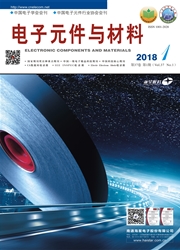

 中文摘要:
中文摘要:
以钨粉和双氧水为主要原料,采用溶胶-凝胶法及旋转涂膜技术在K9玻璃上制备了WO3纳米薄膜,然后用磁控溅射法在该WO3薄膜表面溅射掺杂了Pt作催化剂。将此Pt—WO3薄膜分别在100~500℃的氮气环境中进行热处理,用XRD,AFM,分光光度计等观察了薄膜的结构和表面形貌,分析了薄膜的微观结构及热处理温度和催化剂含量对薄膜的结构和氢敏性能的影响。结果表明,薄膜经400℃以下热处理后是非晶态结构,表面疏松多孔,透光率较高,氢敏效果好;经400℃以上热处理后呈晶态结构,表面粗糙致密,透光率较低,氢敏效果差;催化剂Pt的含量对薄膜的氢敏效果有影响,当含量为5%(质量分数)时,Pt—WO3薄膜的氢敏感性能较好。
 英文摘要:
英文摘要:
Pt-WO3 thin films have been prepared with Sol-Gel method and DC reactive magnetron sputtering method. After annealed in ambient N2 at 100-500℃, the microstructure and surface morphology of the films were analysed with XRD and AFM. The effect of annealing temperature and content of catalyzer (Pt) on the structure and hydrogen-sensing properties were examined. The results showed that the Pt-WO3 thin films which annealed below 400℃ are amorphous and have good hydrogen-sensing properties; The films which annealed over 400℃ are crystalline and have bad hydrogen-sensing properties; The permeated ray rate and hydrogen-sensitivity of the films decreased with annealed temperature; The amount of Pt has effect on the film's hydrogen-sensing property, when the content is 5% (mass fraction) Pt, the Pt-WO3 thin film has good hydrogen-sensing property.
 同期刊论文项目
同期刊论文项目
 同项目期刊论文
同项目期刊论文
 期刊信息
期刊信息
